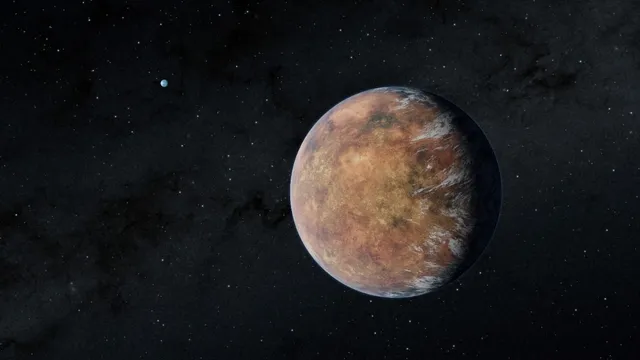We have all learnt what makes our Earth habitable: its precise distance from our Sun allows for the perfect amount of heat to sustain life. In the search for life outside our planet, scientists are looking for planets which have this key trait; now, it seems that they have found one about 135 light years from us.
TOI-715b is an exoplanet orbiting a red-dwarf star, which is the coldest star type in the main sequence stars, or stars that have helium at their cores. To make up for heat, the exoplanet, a planet outside of our Solar System, is much closer to the star and makes an orbit around it in just nineteen Earth days. TOI-715b is also a super-Earth, or a planet larger than Earth, by 1.5 times. However, another exoplanet, TOI-715c, estimated to be around the size of ours is also orbiting the same red-dwarf star. Astronomers say that TOI-715b is close enough to its star to be in the habitable zone, the distance needed to and from the star to have liquid water on its surface, a must to maintain life as we know it. These exoplanets were spotted by astronomers using NASA’s Transiting Exoplanet Survey Satellite, or TESS.

TESS was designed to find exoplanets orbiting the brightest stars to create data about the “periodic drops [of the brightness] caused by planet transits”. However, that mission ended in 2020 and, currently, TESS is on an extended mission to photograph exoplanets to show the wide range of planets in our universe. TESS has found more than 65 new exoplanets as well as thousands of candidates that still need to be verified by astronomers.
“TESS is producing a torrent of high-quality observations providing valuable data across a wide range of science topics”
Patricia Boyd, the project scientist for TESS at NASA
While there is a lot of space for miscalculation when trying to see whether an exoplanet is in fact in the habitual zone, scientists believe that TOI-715b is located in the conservative habitual zone. This is an area measured by “‘moist’ and ‘maximum’ greenhouse limits”, and is less likely to have opportunities for error. Many more missions are planned to be launched in the future such as PLATO, Planetary Transits and Oscillations of stars, which will have twenty six cameras to try and find solar systems such as ours.
These exciting new discoveries can help us identify other planets like TOI-715b that have the potential to sustain life. As Albert Einstein once stated “given the millions of billions of Earth-like planets, life elsewhere in the universe without a doubt, does exist. In the vastness of the Universe we are not alone.”

